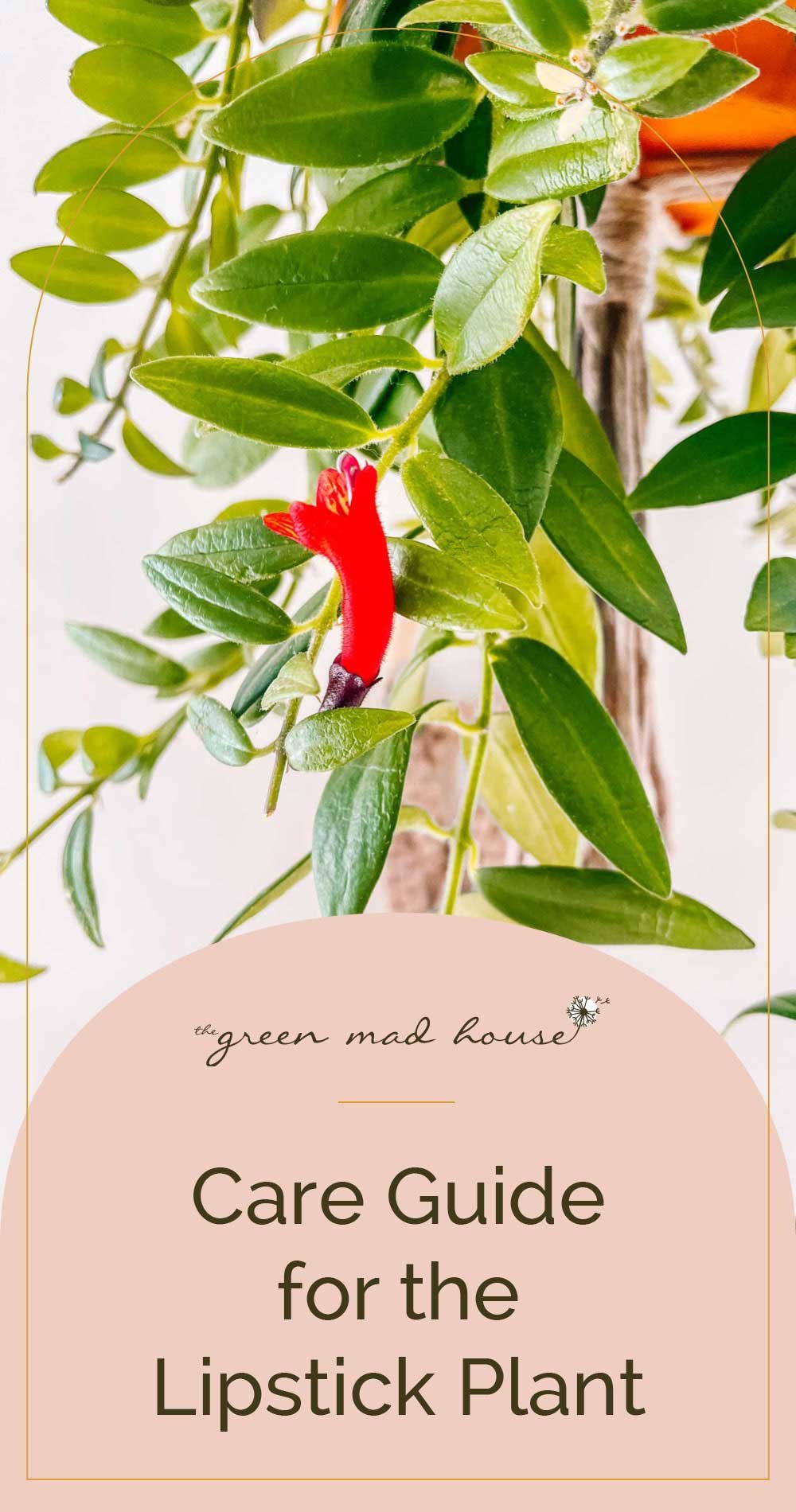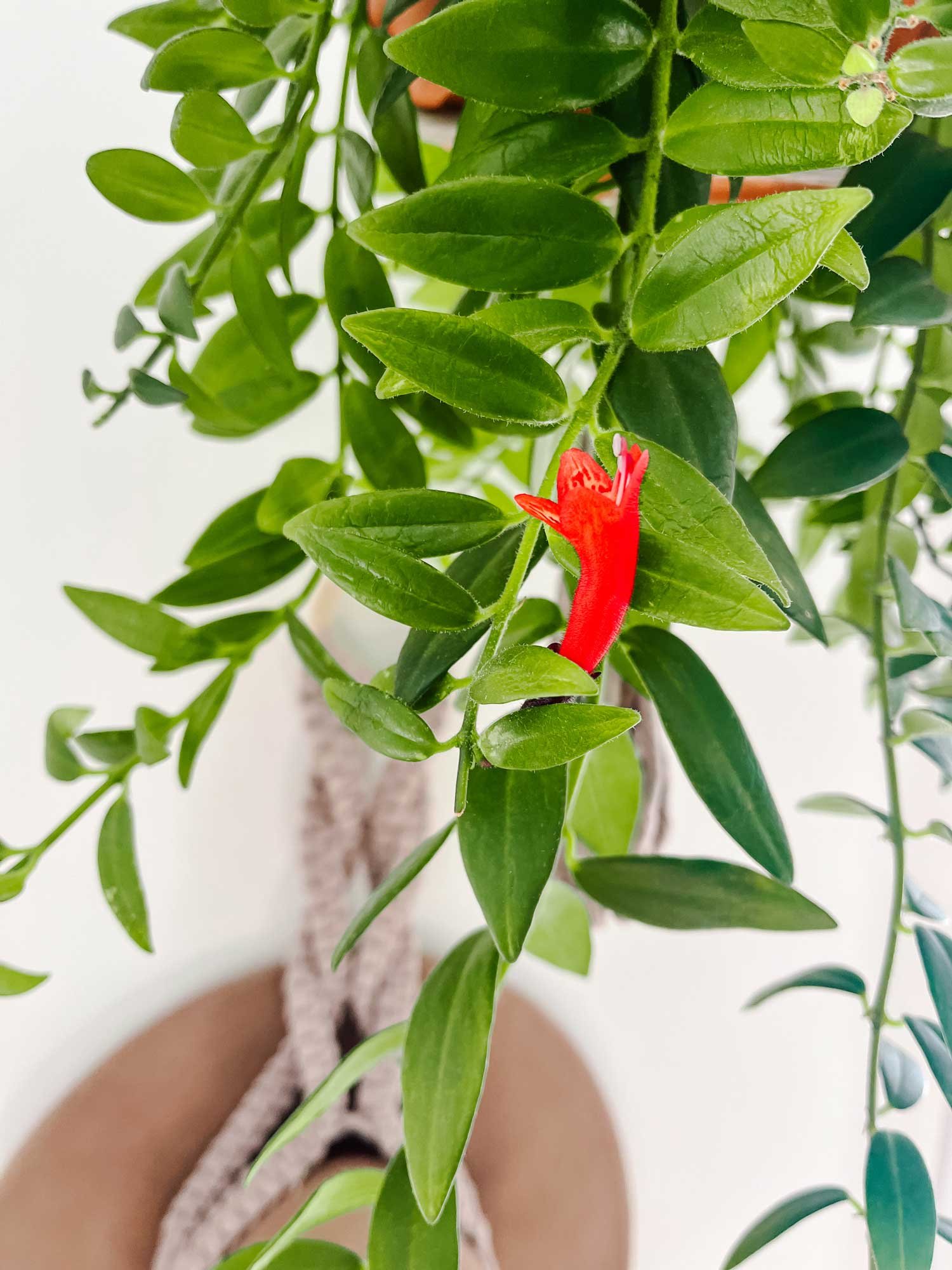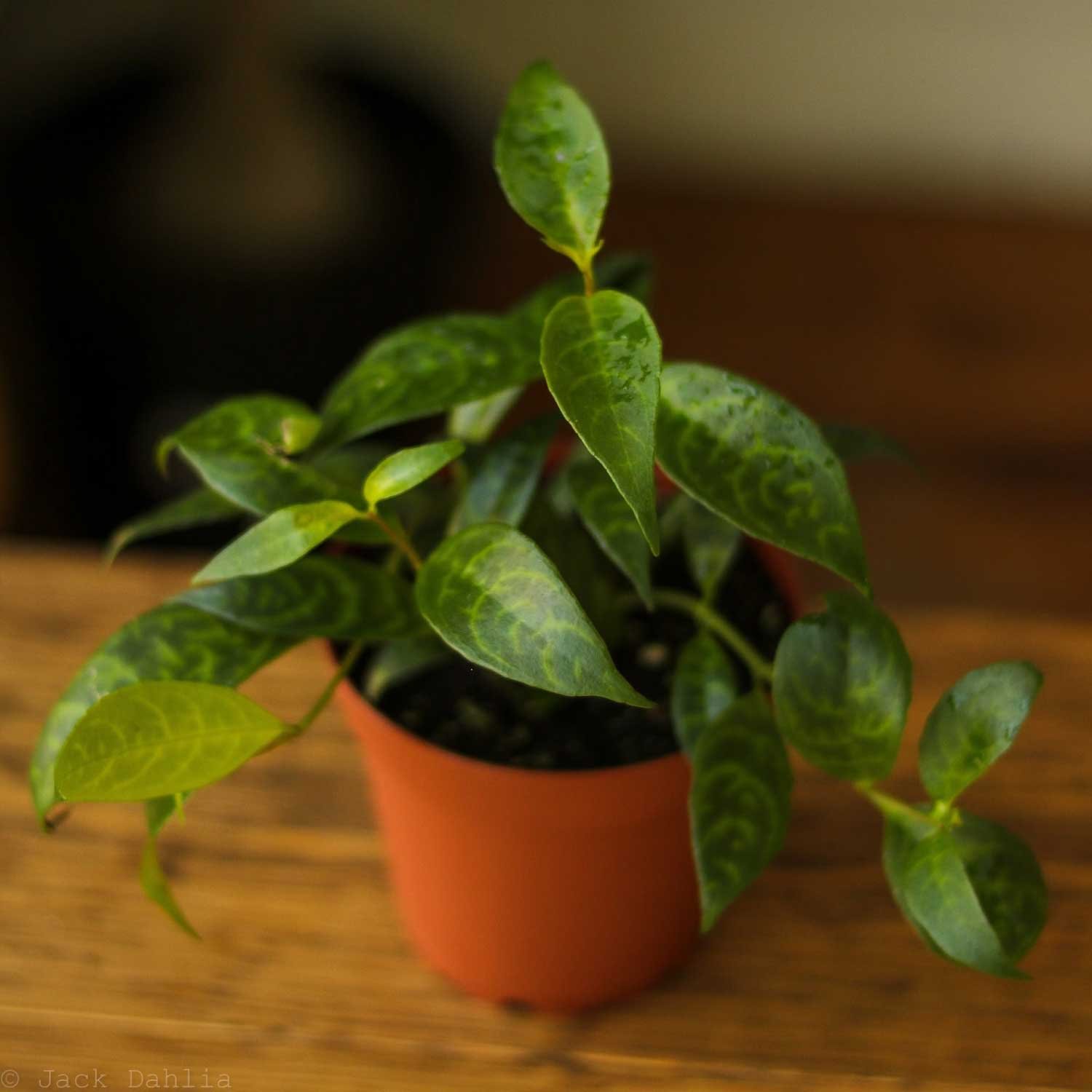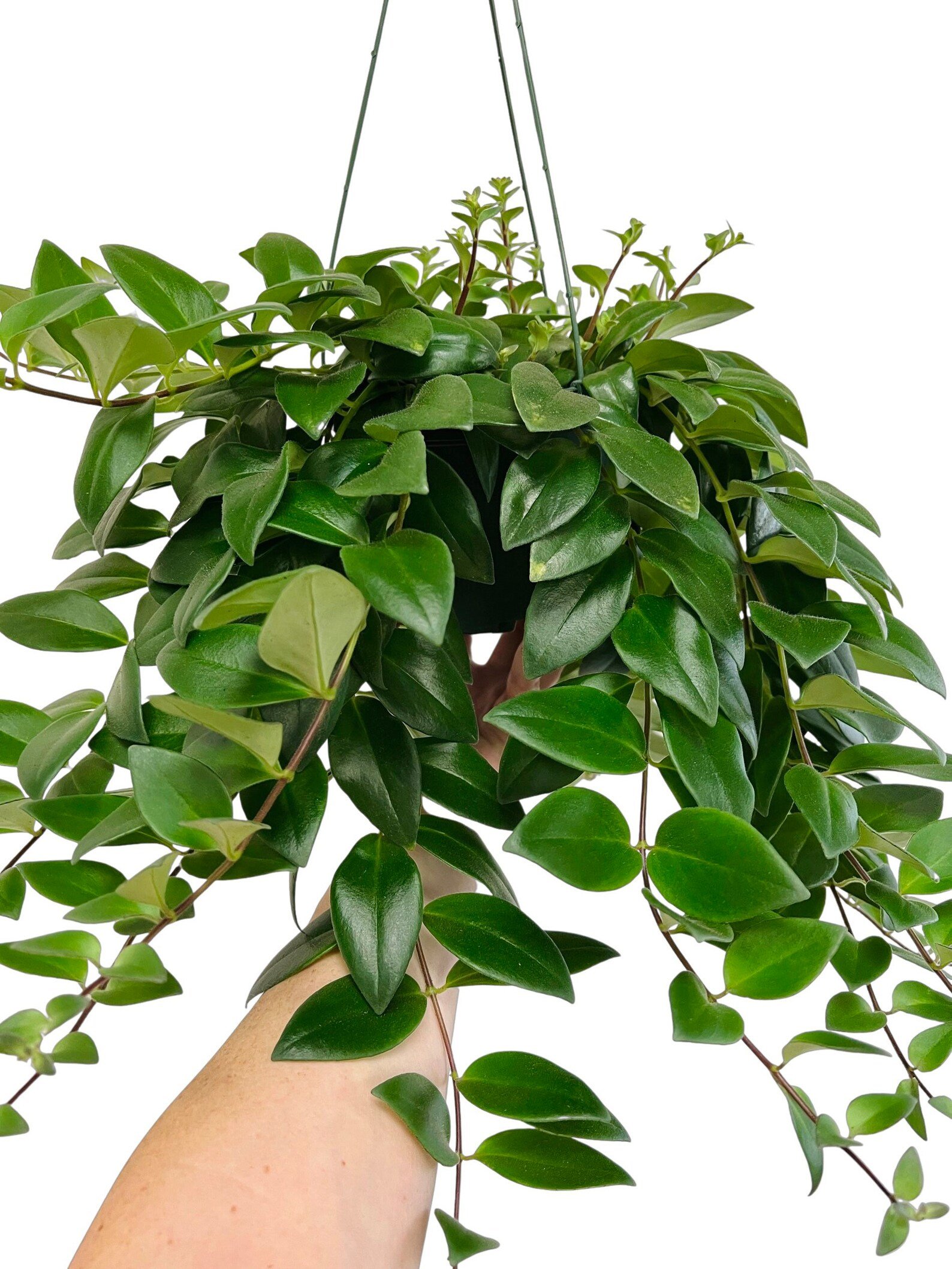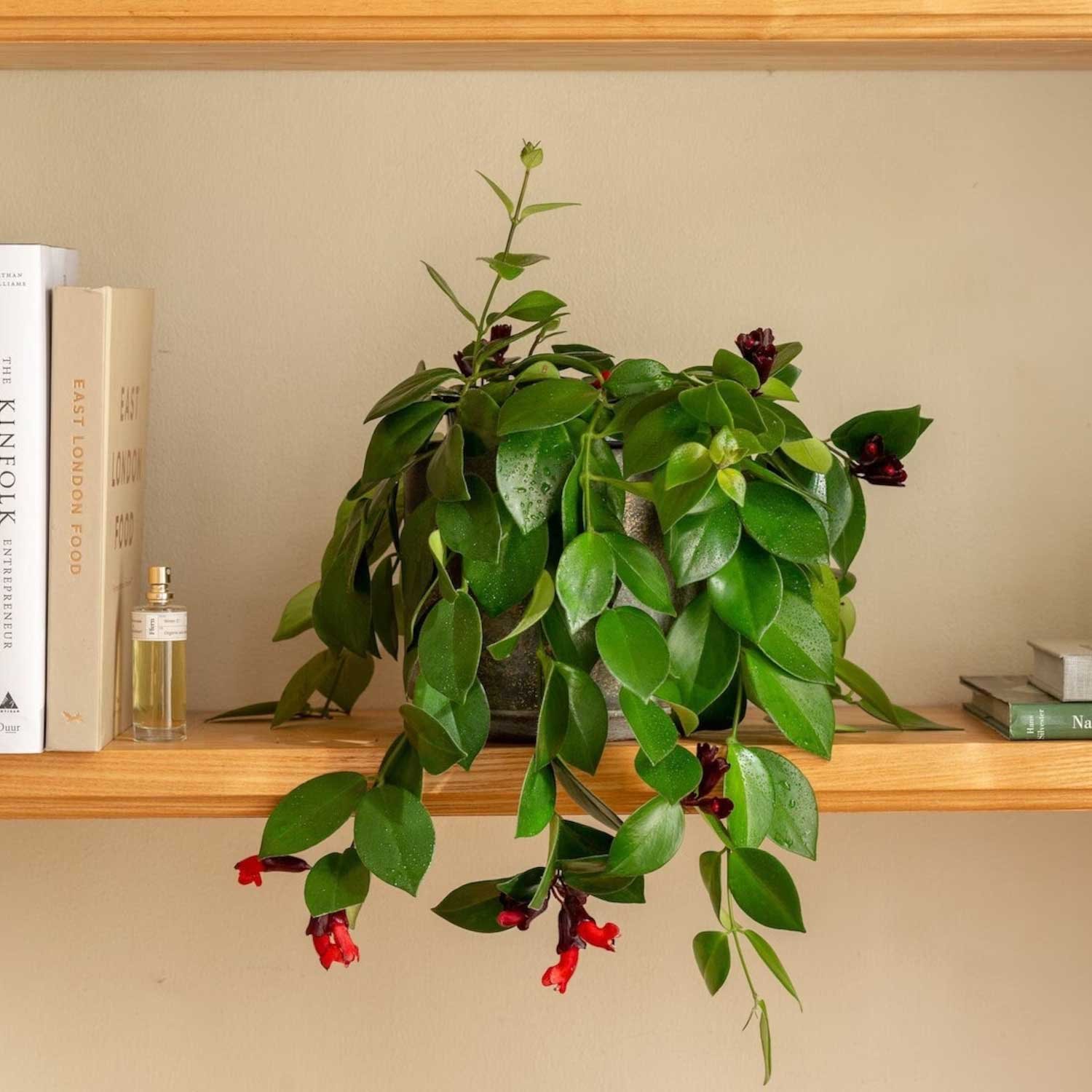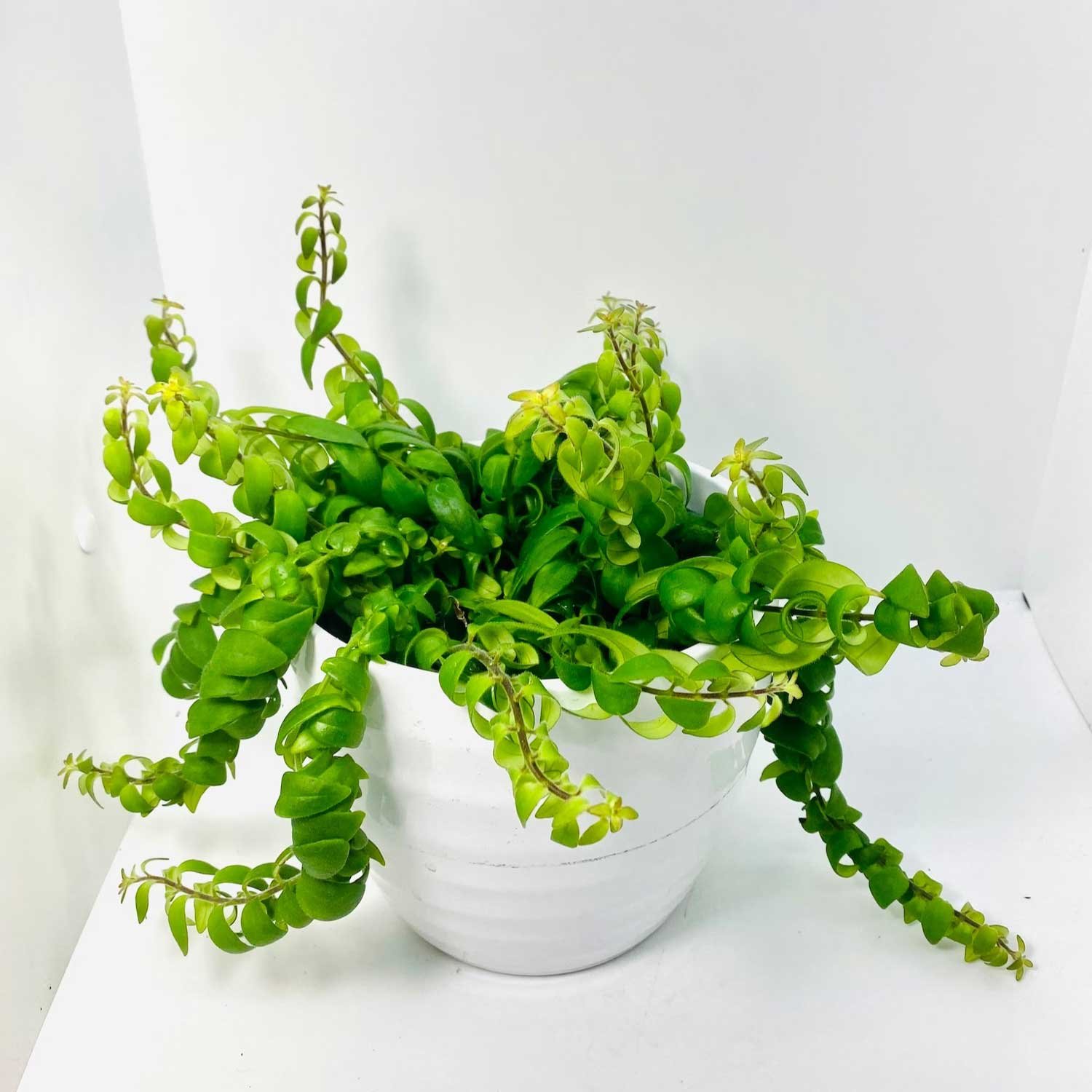Care Guide for the Lipstick Plant
As an Amazon and Etsy Associate I earn from qualifying purchases.
About the Lipstick Plant
The Lipstick Plant (Aeschynanthus radicans), also known as a basket vine, is a beautiful and unique perennial that is often grown as a houseplant. It has waxy, dark green, pointy leaves and vibrant, red, tubular flowers. It gets its fun name from its dark maroon buds that, as they open, have bright red blooms extend out like lipstick coming out of a tube. It is definitely giving Taylor Swift Red era. These plants do best as hanging plants or cascading off a shelf and can reach lengths of 2 to 3 feet.
Native to the tropical regions of Southeast Asia, it is naturally an epiphytic species meaning it grows on another plant and gets its moisture and nutrients from the climate around it. It does not have to be grown this way inside and instead just needs a well-draining potting mix. Recreating their tropical conditions will not only help the Lipstick Plant thrive but bloom frequently. Giving warmth, humidity, and filtered sunlight will ensure blooming through much of the year especially summer and fall. If you can meet these requirements than you have an easy to care for houseplant.
Lipstick Plant Varieties
I only have one type of Lipstick Plant (seen in the photos) and it is the original type. This isn’t hard to find in stores but the varietals might be a little more tough to procure. Here are some of my favorites:
- Black Pagoda - Also called the Zebra Basket Vine, this varietal has purple mottled, dark green leaves with a purple tint on the underside. It’s blooms are green and yellow as opposed to red. This varietal is often confused for a Hoya.
- Curly - This varietal has wavy leaves that are very smooth and gently curve upwards.
- Tangerine - Not shockingly, the Tangerine has yellow-orange blooms.
- Mona Lisa - This cultivar has darker leaves and red-orange flowers which provide a nice contrast.
- Rasta - This is probably my favorite as I love interesting leaves. The Rasta has densely twisted leaves, similar to a Hoya Hindu Rope, but the same bright red blooms. It is also called a Twisted or Twister Lipstick Plant.
- Variegata - The green leaves of this cultivar are variegated with yellow, white, or cream.
How to Care for your Lipstick Plant
SOIL: Since this plant grows as an epiphyte in its damp, native climate it needs fast draining soil. A heavy soil will retain water and lead to root rot. To make sure your potting mix is well aerated, mix in perlite and sand. This promotes good drainage. You can also use spaghnum moss to create a Kokedama.
TEMPERATURE: The ideal temperature for this plant is 65-75 degrees Fahrenheit which is pretty easy considering most houses stay in that range. If your temperature falls too low or the plant is exposed to drafty windows, AC units, or sudden temperature shifts, leaves will start to drop.
LIGHT: Lipstick Plants need bright and filtered light similar to their natural growing conditions of growing on other plants shaded by the tropical canopy. Mine is currently residing between two east windows. If it receives too much sun the leaves with burn. If it does not get enough light it will drop leaves and it will either not flower or will flower very little.
WATER: As noted with their soil, because they are epiphytes they do not want to sit in water. Too much water will lead to leaf drop and root rot. I do not let my Lipstick Plant fully dry out but instead the couple top inches. I actually like using watering globes for this plant. Since it is hanging it makes assessing its water intake easier and provides consistent moisture over the week.
HUMIDITY: Lipstick Plants love humidity. If you reside somewhere that tends to be very dry try to place your plant in the bathroom (if the lighting is correct) or the other most humid rooms, kitchen and laundry room. It doesn't hurt to assist it with a daily misting, I recommend this continuous mister or a humidifier in the room.
FERTILIZER: Nothing tough here. Fertilize your plant twice a month during growing season and stop during winter. I recommend a liquid fertilizer.
Common Questions
REPOTTING: Repot your Lipstick Plant when it becomes super rootbound and is pushing out of its container. These plants don't mind being a little rootbound since they don't want to be sitting in an excess of soil and therefore water. When you do repot, aim for early spring or early fall. Don't worry, I wrote a guide on repotting your plants.
PROPAGATION: These plants are easy to propagate at any time of the year though growing season always has the highest chance of success and faster root growth. I accidentally ripped a few of my vines off when I was putting it into its hanger and it was so easy to propaagte them. They even bloomed during propagation! Here is how to do it:
- Using clean scissors or shears, cut a piece around 5 inches or more long. If you cut close to the base, that piece will split and grow new vines which will give your plant more compactness. If you clip off a piece at the end you will see a pronged vine eventually.
- Remove the leaves at the top as you will be placing the upper stem in water/soil and roots will come from that area.
- If you want you can dip the end of the stem in rooting hormone to encourage growth.
- I placed mine into a propagation vase of water and after 4 weeks had a good amount of roots. I try to have a few inches of roots before planting in soil.
- Secondarily, you can plant the cutting into a soil mixture. Keep the soil moist and you can even cover the pot with clear plastic to up the humidity.
PRUNING: Pruning is helpful for vining plants to keep them from looking straggly. It encourages new growth and keeps the plant looking healthy and compact. If you need to prune it, make sure to use clean shears, and just follow the steps of propagating.
PESTS & DISEASES: These plants don't usually have issues with pests but can occassionally get aphids, mites or mealybugs. If you so run into an issue, neem oil is the cure. If the plants soil is kept too moist they can develop a fungal issue. Fix this with a well draining soil and less watering.
PETS: This is not poisonous for pets or humans.
FLOWERS: Lipstick Plants can offer year round flowers. For some reason mine had a ton around Christmas but their most prolific seasons are summer and early fall. Of note: these blooms do not have a fragrant aroma.
To encourage more blooms, a cooler and drier climate in winter helps set up the plant for a strong spring. Additionally, pruning helps encourage new growth. If your plant is not blooming than make sure it has enough sun, enough nutrients (liquid fertilizer) and its being watered correctly.
I think this plant is so fun. Maybe because I love a good lipstick or because I am a sucker for a hanging plant, but having a houseplant that brings in such frequent, vibrant blooms is a real treat. Tag me on Instagram with your Lipstick babies @thegreenmadhouse and let me know if you have any questions below.













